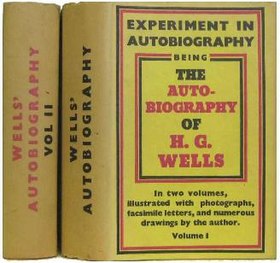
The Open Conspiracy: Blue Prints for a World Revolution was published in 1928 by H. G. Wells, when he was 62 years old. It was revised and expanded in 1930 with the additional subtitle A Second Version of This Faith of a Modern Man Made More Explicit and Plain. In 1931 a further revised edition appeared titled What Are We to Do with Our Lives?. A final version appeared in 1933 under its original title. Many of its ideas are anticipated in Wells's 1926 novel The World of William Clissold.

The Outline of History, subtitled either "The Whole Story of Man" or "Being a Plain History of Life and Mankind", is a work by H. G. Wells chronicling the history of the world from the origin of the Earth to the First World War. It appeared in an illustrated version of 24 fortnightly installments beginning on 22 November 1919 and was published as a single volume in 1920. It sold more than two million copies, was translated into many languages, and had a considerable impact on the teaching of history in institutions of higher education. Wells modelled the Outline on the Encyclopédie of Denis Diderot.
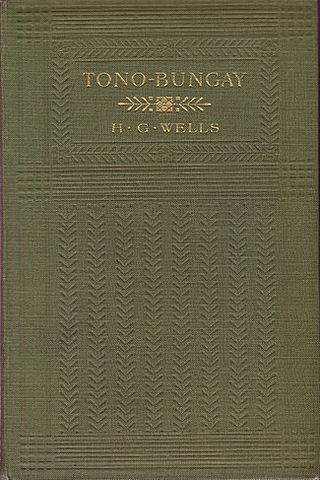
Tono-Bungay is a realist semiautobiographical novel written by H. G. Wells and first published in book form in 1909. It has been called "arguably his most artistic book". It had been serialised before book publication, both in the United States, in The Popular Magazine, beginning in the issue of September 1908, and in Britain, in The English Review, beginning in the magazine's first issue in December 1908.
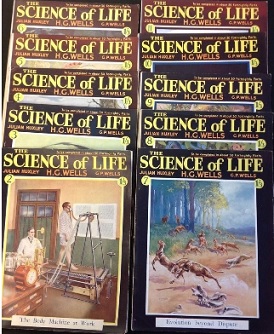
The Science of Life is a book written by H. G. Wells, Julian Huxley and G. P. Wells, published in three volumes by The Waverley Publishing Company Ltd in 1929–30, giving a popular account of all major aspects of biology as known in the 1920s. It has been called "the first modern textbook of biology" and "the best popular introduction to the biological sciences". Wells's most recent biographer notes that The Science of Life "is not quite as dated as one might suppose".
Written in the late 19th century by H. G. Wells and first published in The Butterfly, and collected in The Obliterated Man and Other Stories, "A Vision of Judgment" is a short story in 9 sections. It portrays a Last Judgment in which God and the archangel Gabriel laugh at sinners and saints alike, embarrassing them until they flee "up the sleeve of God." After every human soul has taken shelter there, all of humanity, "enlightened" and "in new clean bodies," is given a second chance. God shakes them—or rather us—"out of his sleeve upon the planet he had given us to live upon, the planet that whirled about green Sirius for a sun," saying "now that you understand me and each other a little better. . . . try again."

The Dream is a 1924 novel by H. G. Wells about a man from a Utopian future who dreams the entire life of an Englishman from the Victorian and Edwardian eras, Harry Mortimer Smith. As in other novels of this period, in The Dream Wells represents the present as an "Age of Confusion" from which humanity will be able to emerge with the help of science and common sense.

A Modern Utopia is a 1905 novel by H. G. Wells.

The Wonderful Visit is an 1895 novel by H. G. Wells. With an angel—a creature of fantasy unlike a religious angel—as protagonist and taking place in contemporary England, the book could be classified as contemporary fantasy, although the genre was not recognised in Wells's time. The Wonderful Visit also has strong satirical themes, gently mocking customs and institutions of Victorian England as well as idealistic rebellion itself.

Mr. Britling Sees It Through is H.G. Wells's "masterpiece of the wartime experience in south eastern England." The novel was published in September 1916.

Marriage is a 1912 novel by H. G. Wells.

The Soul of a Bishop is a 1917 novel by H. G. Wells.
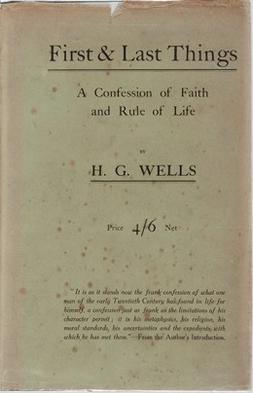
First and Last Things is a 1908 work of philosophy by H. G. Wells setting forth his beliefs in four "books" entitled "Metaphysics," "Of Belief," "Of General Conduct," and "Some Personal Things." Parts of the book were published in the Independent Magazine in July and August 1908. Wells revised the book extensively in 1917, in response to his religious conversion, but later published a further revision in 1929 that restored much of the book to its earlier form. Its main intellectual influences are Darwinism and certain German thinkers Wells had read, such as August Weismann. The pragmatism of William James, who had become a friend of Wells, was also an influence.
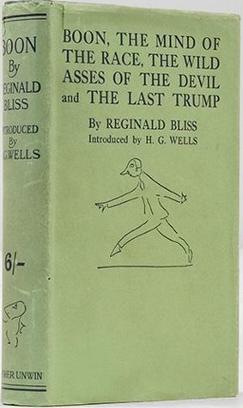
Boon is a 1915 work of literary satire by H. G. Wells. It purports, however, to be by the fictional character Reginald Bliss, and for some time after publication Wells denied authorship. Boon is best known for its part in Wells's debate on the nature of literature with Henry James, who is caricatured in the book. But in Boon Wells also mocks himself, calling into question and ridiculing a notion he held dear—that of humanity's collective consciousness.

God the Invisible King is a theological tract published by H. G. Wells in 1917.

A Year of Prophesying collects 55 newspaper columns written by H. G. Wells in 1923 and 1924.

Mr. Blettsworthy on Rampole Island is a 1928 novel by H. G. Wells. The novel entered the public domain in the United States in 2024.

The Bulpington of Blup is a 1932 novel by H. G. Wells. It is a character study analyzing the psychological sources of resistance to Wellsian ideology, and was influenced by Wells's acquaintance with Carl Gustav Jung and his ideas.

Joan and Peter, a 1918 novel by H. G. Wells, is at once a satirical portrait of late-Victorian and Edwardian England, a critique of the English educational system on the eve of World War I, a study of the impact of that war on English society, and a general reflection on the purposes of education. Wells regarded it as "one of the most ambitious" of his novels.
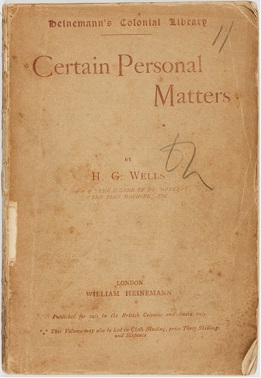
Certain Personal Matters is an 1897 collection of essays selected by H. G. Wells from among the many short essays and ephemeral pieces he had written since 1893. The book consists of thirty-nine pieces ranging from about eight hundred to two thousand words in length. A one-shilling reprint was issued in 1901 by T. Fisher Unwin.

Anticipations of the Reaction of Mechanical and Scientific Progress upon Human Life and Thought, generally known as Anticipations, was written by H.G. Wells at the age of 34. He later called the book, which became a bestseller, "the keystone to the main arch of my work." His most recent biographer, however, calls the volume "both the starting point and the lowest point in Wells's career as a social thinker."
